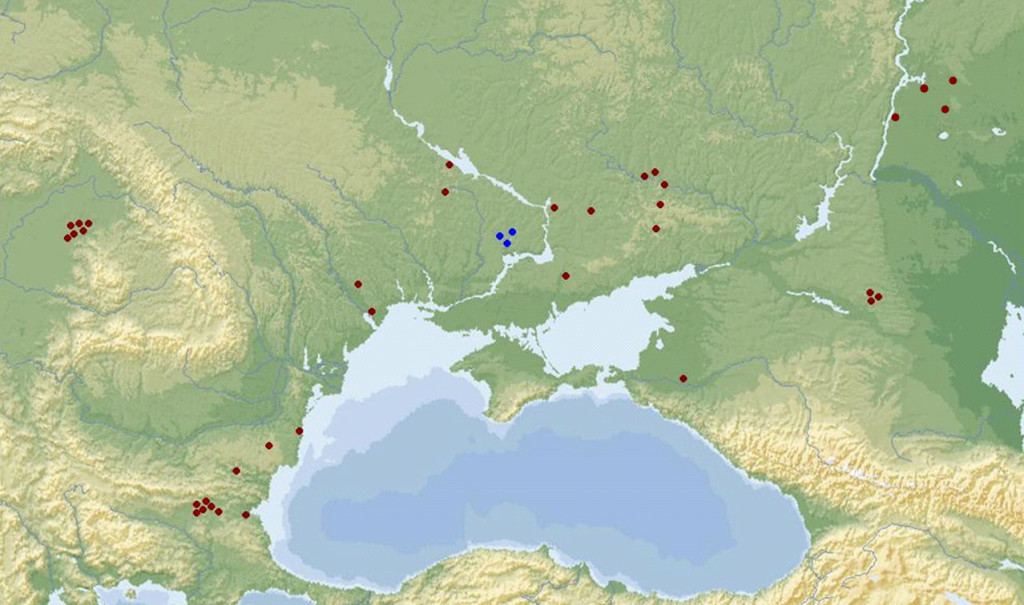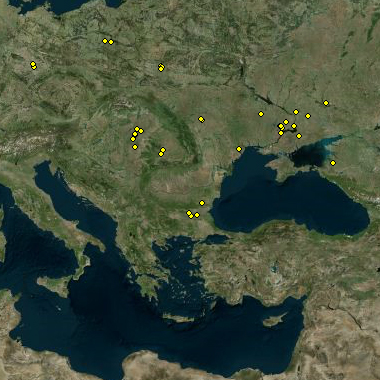In this research project, isotopic analyses (87Sr/86Sr, δ18O, δ15N, δ13C) of prehistoric human and faunal skeletal remains from the Western Eurasian steppe belt are conducted and interpreted within an archaeological context. Several hundred samples were taken from micro regions between the Altai Mountains, the Eurasian steppe belt and the eastern European plains in Hungary and Bulgaria (figure 1).
Research

Samples were taken from the following micro regions in the Northern Pontic and its adjacent areas: Hungary, Bulgaria, western Ukraine, southern Central Ukraine, Eastern Ukraine, Kuban region, Kalmykia, Middle Volga Region. The Altai Mountains are missing on the map (Eneolithic/Bronze Age: red, Iron Age: blue).
The chronological focus is on the 3rd millennium BC, where there is evidence for two cultural communities: the Yamnaya culture (late 4th millennium BC to mid 3rd millennium BC in the Northern Pontic region) and the following and partly overlapping Catacomb culture (about 2800 to 2000/1900 BC). Earlier research approaches regarded the members of these populations as nomads. Recent research has mostly rejected this interpretation, with archaeologists citing a subsistence economy largely based on animal husbandry and a multitude of grave monuments (kurgans) in comparison to the small number of known settlements as evidence for partly nomadic or pastoral ways of life. This project followed a different path by attempting to characterize the mobility behaviour and possible migrations of these individuals using strontium and oxygen isotope analyses. The data was compared to samples from the same regions but from the preceding Eneolithic and the later Iron Age, a period for which written sources indicate high mobility of the Scythian tribes. The strontium isotope analysis was conducted at the University of Bristol, while the samples for oxygen isotopes are prepared there and sent for further analysis to the RLAHA at the University of Oxford in cooperation with the University of Bristol. The answer to the second key question regarding the palaeodiet and subsistence economy of selected sites in the Northern Pontic was approached by the application of carbon and nitrogen isotope analysis. In the end the large isotopic dataset was interpreted in combination with the archaeological hypotheses and data.
The dissertation was successfully completed in 2012. It has been published in 2015 with the title “Prehistoric Mobility and Diet in the West Eurasian Steppes 3500 to 300 BC. An isotopic Approach” within the series Topoi. Berlin Studies of the Ancient World (Vol. 25).

